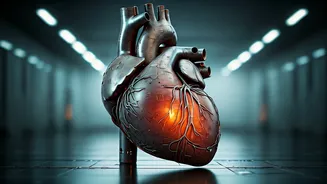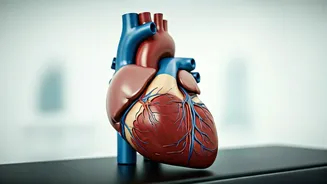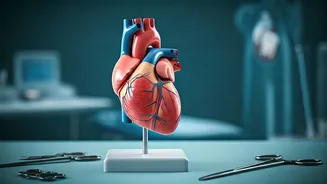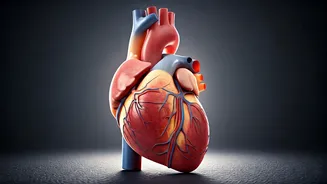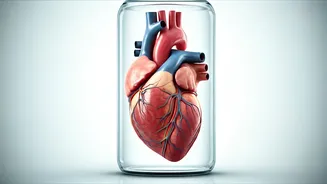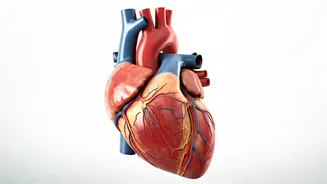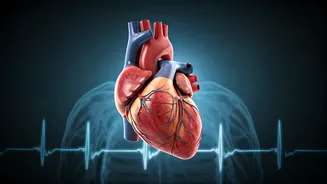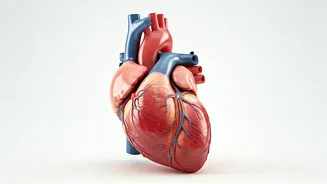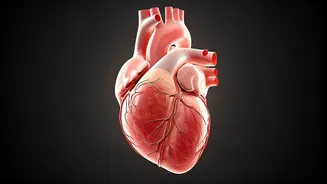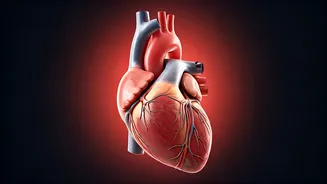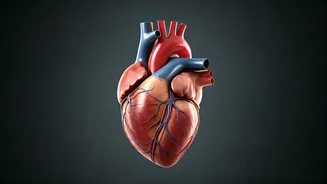Subtle Symptoms Unveiled
Silent heart attacks, unlike their more dramatic counterparts, can creep up without the obvious symptoms that many associate with cardiac events. Consequently,
these attacks are frequently overlooked. Common signs include bloating, a feeling of fullness in the abdomen, which is often dismissed as a digestive issue. Another subtle indicator is excessive burping, potentially stemming from the body's reaction to decreased blood flow. Chest discomfort, such as mild pressure or a squeezing sensation, may be intermittent or seemingly unrelated to physical exertion, further masking the underlying problem. It's also important to note that these symptoms can vary from person to person. Because of these factors, it is critical to pay attention to any unusual or persistent physical sensations and promptly consult a healthcare professional. Recognizing these often-overlooked symptoms could be crucial in securing early diagnosis and timely intervention.
Beyond the Obvious
Besides bloating, burping, and chest discomfort, other less commonly recognized signs can point towards a silent heart attack. Fatigue, especially if it appears suddenly or worsens with minimal exertion, is a critical symptom. Unexpected shortness of breath, independent of physical activity, is another concern, as it indicates the heart isn't efficiently circulating oxygen. Cold sweats, the sudden onset of perspiration without a clear trigger, should also be taken seriously. Discomfort or pain extending down the left arm, jaw, neck, or back, can occur and mimic other conditions, potentially leading to misdiagnosis. The presence of any or several of these symptoms, even if they are mild, should prompt a consultation with a doctor. This is especially true if you have existing risk factors for heart disease, such as a family history of heart disease, high blood pressure, elevated cholesterol levels, diabetes, or smoking.
Risk Factors Explained
Several factors can increase a person’s likelihood of experiencing a silent heart attack. Lifestyle choices, such as smoking, which damages blood vessels and increases the risk of clots, are among the most significant risk factors. High blood pressure strains the heart and arterial walls, heightening the risk of plaque buildup. Elevated cholesterol levels, especially LDL or 'bad' cholesterol, can lead to the formation of plaques that narrow arteries. Diabetes, both Type 1 and Type 2, causes damage to the blood vessels over time, which increases the possibility of a heart attack. Moreover, a family history of heart disease signifies a genetic predisposition. Being overweight or obese puts extra strain on the heart, increasing the risk. Lack of physical activity and a diet high in saturated and trans fats can also contribute. It is crucial for individuals with several of these risk factors to consult their healthcare provider for routine checkups and appropriate screening tests.
Steps for Prevention
Protecting against a silent heart attack involves adopting a heart-healthy lifestyle. Implementing a balanced diet, rich in fruits, vegetables, whole grains, and lean proteins, helps to maintain healthy cholesterol levels and blood pressure. Regular physical activity, such as brisk walking, running, or swimming, for at least 30 minutes a day, most days of the week, boosts cardiovascular fitness and aids in weight management. Quitting smoking is one of the most significant steps one can take to lower the risk. Managing stress through techniques like yoga, meditation, or spending time in nature can positively affect heart health. Regular check-ups, including blood pressure and cholesterol screenings, are vital for tracking and managing risk factors. People with diabetes should consistently monitor their blood sugar levels, as poor control increases the danger of heart disease. Taking medications as prescribed by your doctor and following all instructions are equally as important.
Immediate Actions Required
If you suspect a silent heart attack, immediate action is necessary. Contact emergency medical services immediately or have someone drive you to the nearest hospital without delay. Do not attempt to drive yourself. It's important to provide medical personnel with complete information about your symptoms, medical history, and any medications you currently take. While waiting for medical assistance, try to stay calm and minimize any physical exertion. If you have been prescribed medication for angina or heart disease, and it is safe to do so, take it as directed. Once at the hospital, medical professionals will carry out tests, such as an electrocardiogram (ECG) to monitor the heart's electrical activity, blood tests to check for cardiac enzymes, and possibly imaging tests. Rapid diagnosis and intervention are critical to minimize damage and improve the chances of recovery. Early treatment can help to restore blood flow to the heart and prevent further complications.
